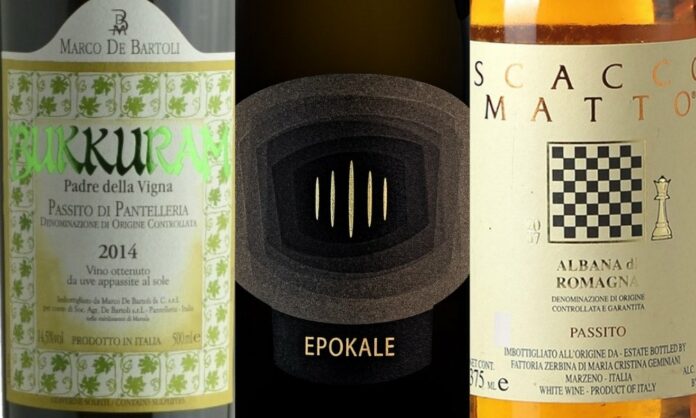
What are the best Italian sweet wines? Discover the best Italian desserts recommended by us with photos and description. To learn more, we also recommend articles on the best white wines, best rosé wines, best red wines and best sparkling wines.
Do you want to indicate a company and a wine? Write to us
INDEX
SWEET WINES IN ITALY
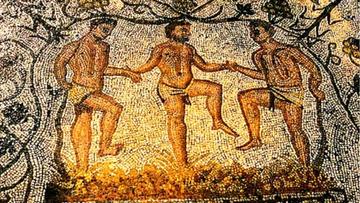
Sweet wines have a thousand-year history: they were the first wines to be produced in antiquity. On the one hand, the inability to carry out fermentation correctly, on the other the need to dry the grapes to improve their conservation and trade. Third, but not least important factor: the organoleptic aspect. The taste of the time knew and asked for a dense and sweet nectar, often watered down.
In Italy, in particular, sweet wines have a very long tradition. Marsala and Vin Santo are probably the pioneers of quality sweet wines, but until the 90s there were many oxidative defects and they played with very high sugar residues and low acidity. In recent decades, however, there has been a real qualitative leap in sweet wines in Italy. Today, in every region sweet wines of great value are produced: it is the case, to name a few, of the Passito di Moscato, the Recioto della Valpolicella, the Vin Santo del Chianti Classico, the Aleatico di Puglia, the Marsala, the Passito di Pantelleria.
BEST ITALIAN SWEET WINES recommended by Jean Marco Palmieri

What are the best sweet wines in Italy?
Discover the wines recommended by Italy’s Finest Wines with our tasting so that everyone can find the ideal wine for their tastes and needs.
You will find many of the most iconic and historic companies but also those that have stood out for their unique and original character.
Epokale 2013 – Cantina Tramin
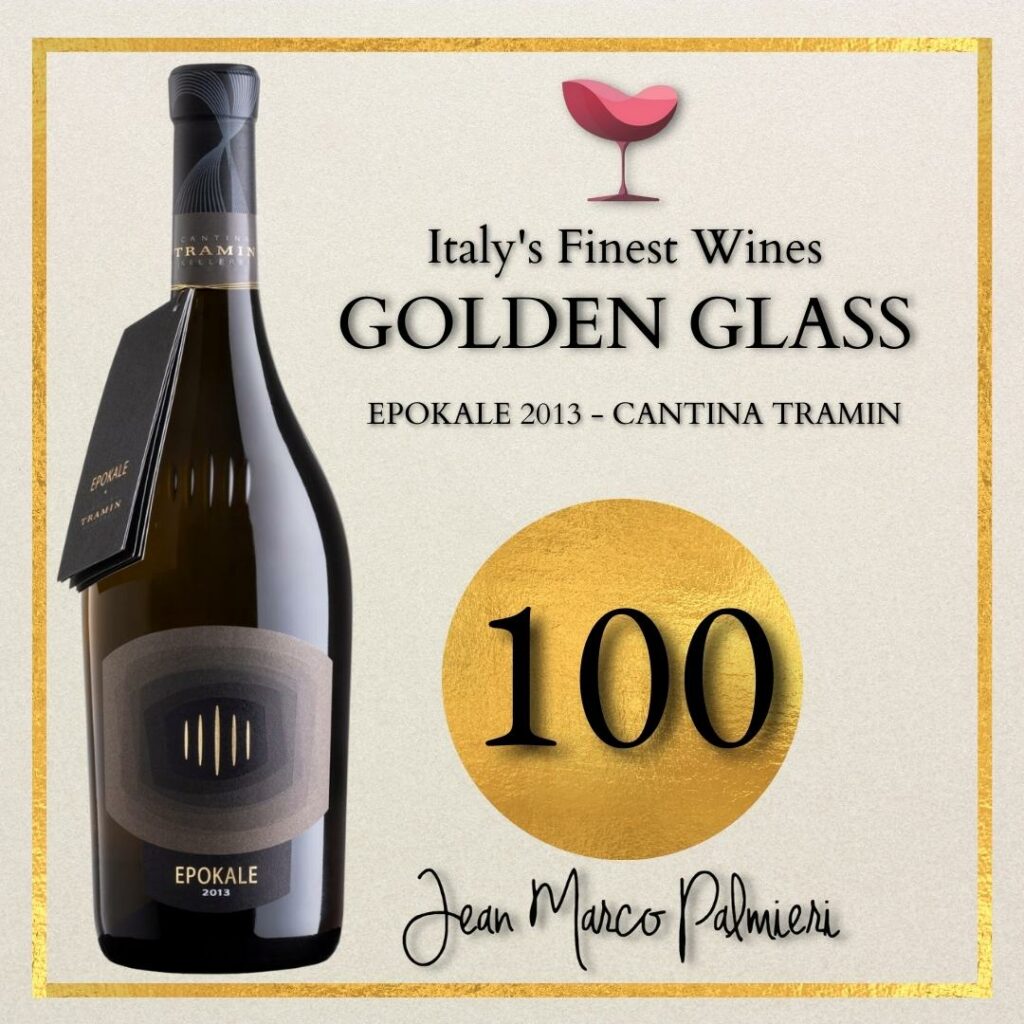
Characteristics: A complex and layered aromatic range. Rose petals and ylang ylang are followed by tropical notes of ripe yellow fruit and lychee, on a base of nutmeg, honey and oriental scents of saffron. The sip is soft and seductive, with a nice savory tone that gives smoothness. A surprisingly persistent finish on honey and hazelnuts.
Refine in small steel containers in contact with the yeasts for eight months.
In its own right, one of the best sweet wines in Italy. Lean, spicy, characterized by a riot of exotic fruit and oriental notes. A sweet wine that will seduce even the most demanding of connoisseurs.
Grapes: Gewurztraminer
Region: Trentino-Alto Adige
Vin Santo del Chianti Classico DOC 2012 – Badia a Coltibuono
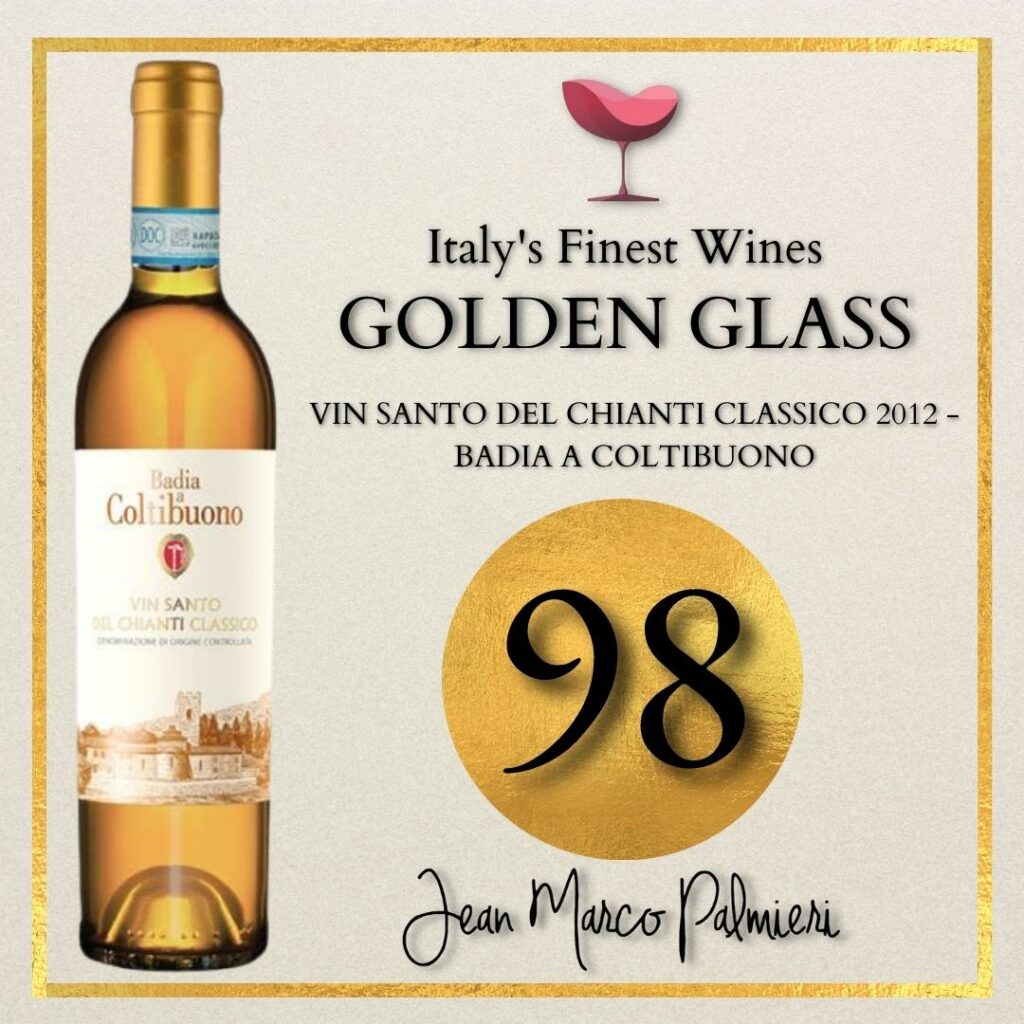
Characteristics: Apricot, figs and citrus peel blend with notes of toasted almonds, dehydrated dates and sweet spices. On the palate it is soft and full-bodied, seducing with an excellent freshness that makes the sip lean.
Refine for at least six years in small oak casks.
Produced by one of the best wineries in the Chianti Classico area, the Vin Santo di Badia a Coltibuono is deep and intense, with a marked minerality that makes it even more seductive. Fully among the best Italian sweet wines for aromaticity and balance.
Grapes: Trebbiano, Malvasia
Tuscany region
Verduzzo Cratis 2018 – Roberto Scubla
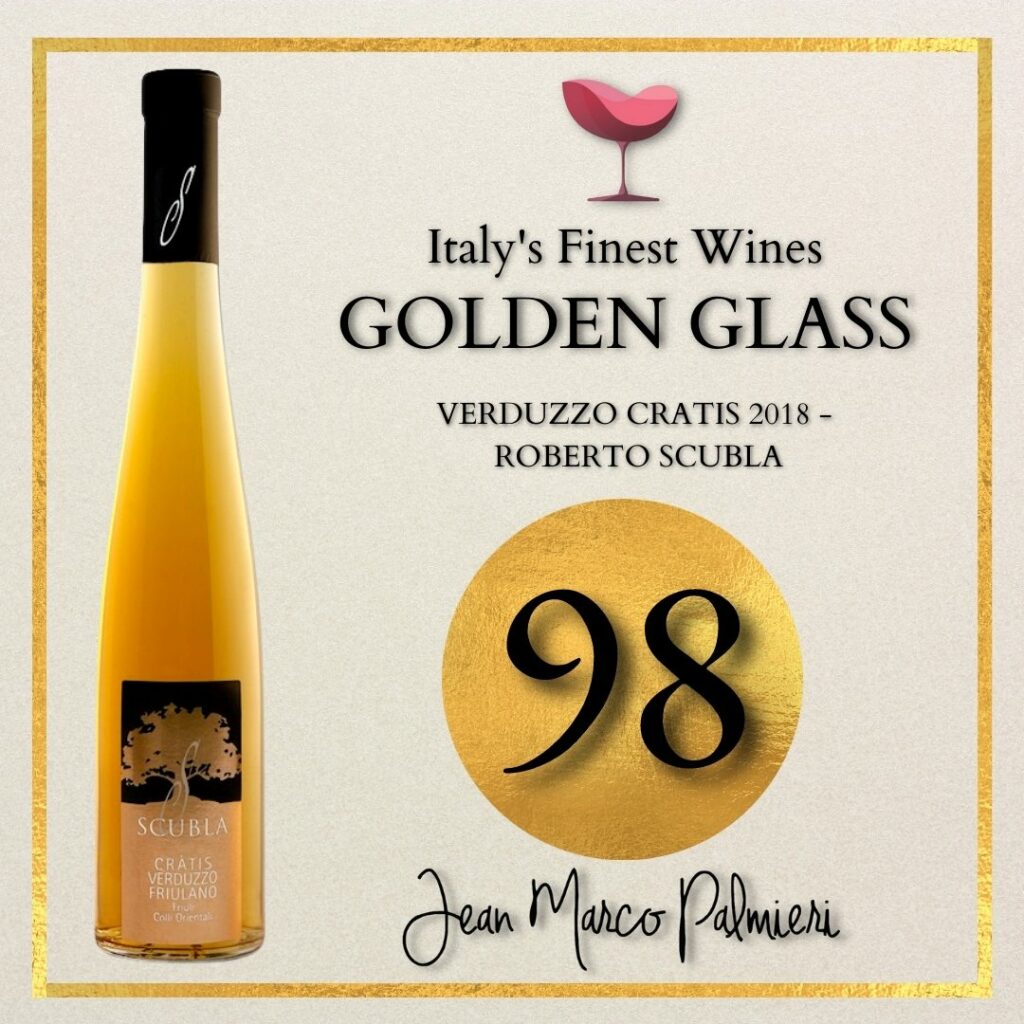
Characteristics: Peach in syrup and orange blossom are mixed with brackish tones of medicinal herbs. On the palate it is pressing, sweet and savory, with an amazing length.
The bunches are dried naturally and the grapes are pressed before Christmas and fermented in French oak barrels. This is followed by the start and subsequent stop of fermentation, after about a month, to conserve the residual sugars, by means of a heating / cooling system of the barriques themselves. In this way the must / wine does not undergo decanting.
A virtuous interpretation of Verduzzo with a sensational evolutionary potential. Among the best Italian sweet white wines for complexity and persistence.
Grapes: Verduzzo Friulano 100%
Region: Friuli Venezia Giulia (Friuli Eastern Hills)
Recioto della Valpolicella Classico DOCG 2011 – Quintarelli Giuseppe
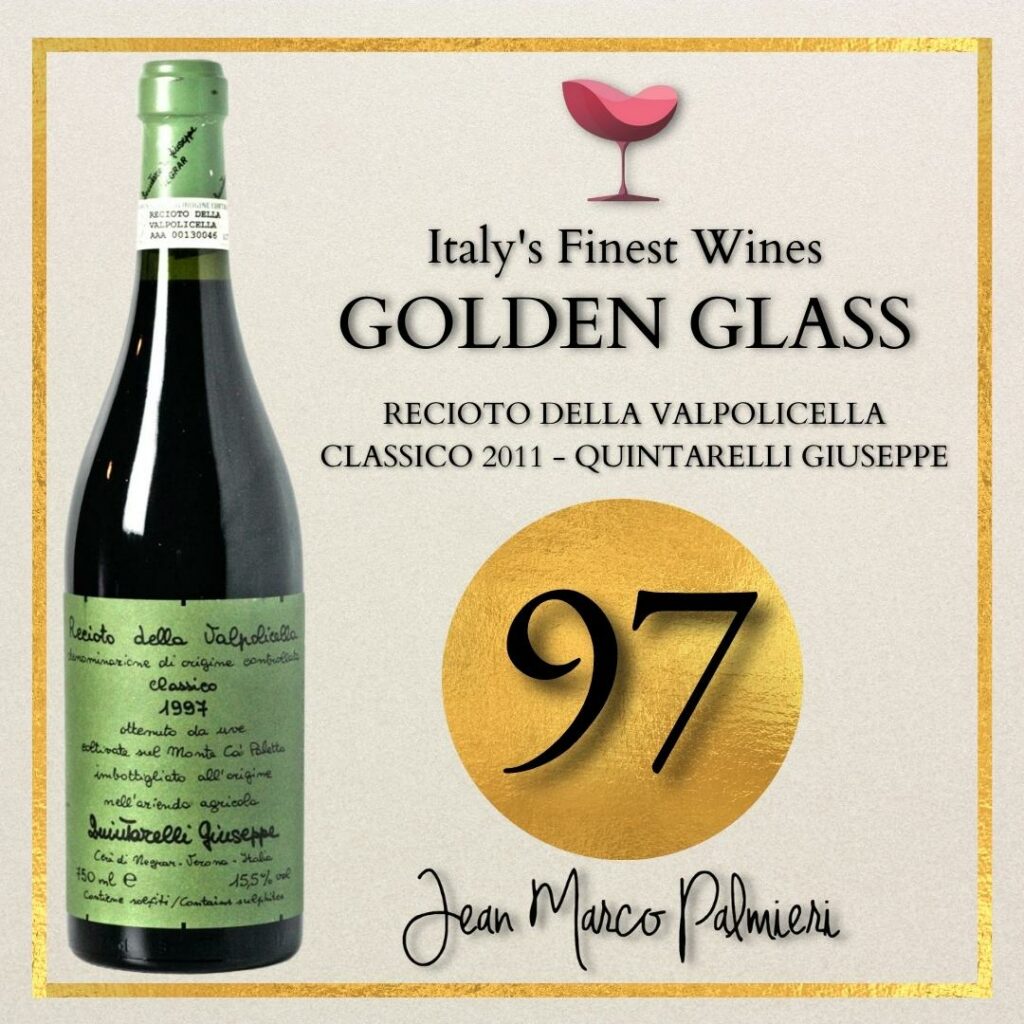
Characteristics: Brushstrokes of cherry, plum and black cherry blend with echoes of cocoa, coffee and noble wood embellished with balsamic puffs. On the palate it reveals power, elegance and minerality. Closing of great finesse and persistence on the fruit.
Obtained from selected grapes of Corvina, Corvinone, Rondinella, Cabernet Sauvignon, Nebbiolo, Croatina and Sangiovese, dried for one hundred and twenty days. It ages in small Slavonian oak barrels for five / six years.
Quintarelli Giuseppe has created a unique Recioto, a complex liquid nectar with refined aromas. Fully among the best sweet wines of Italy for elegance, structure and bouquet.
Grapes: 55% Corvina and Corvinone, 30% Rondinella, 15% Cabernet, Nebbiolo, Croatina and Sangiovese.
Veneto region
Primitivo di Manduria Dolce Naturale ‘Es Più Sole’ 2017 – Gianfranco Fino
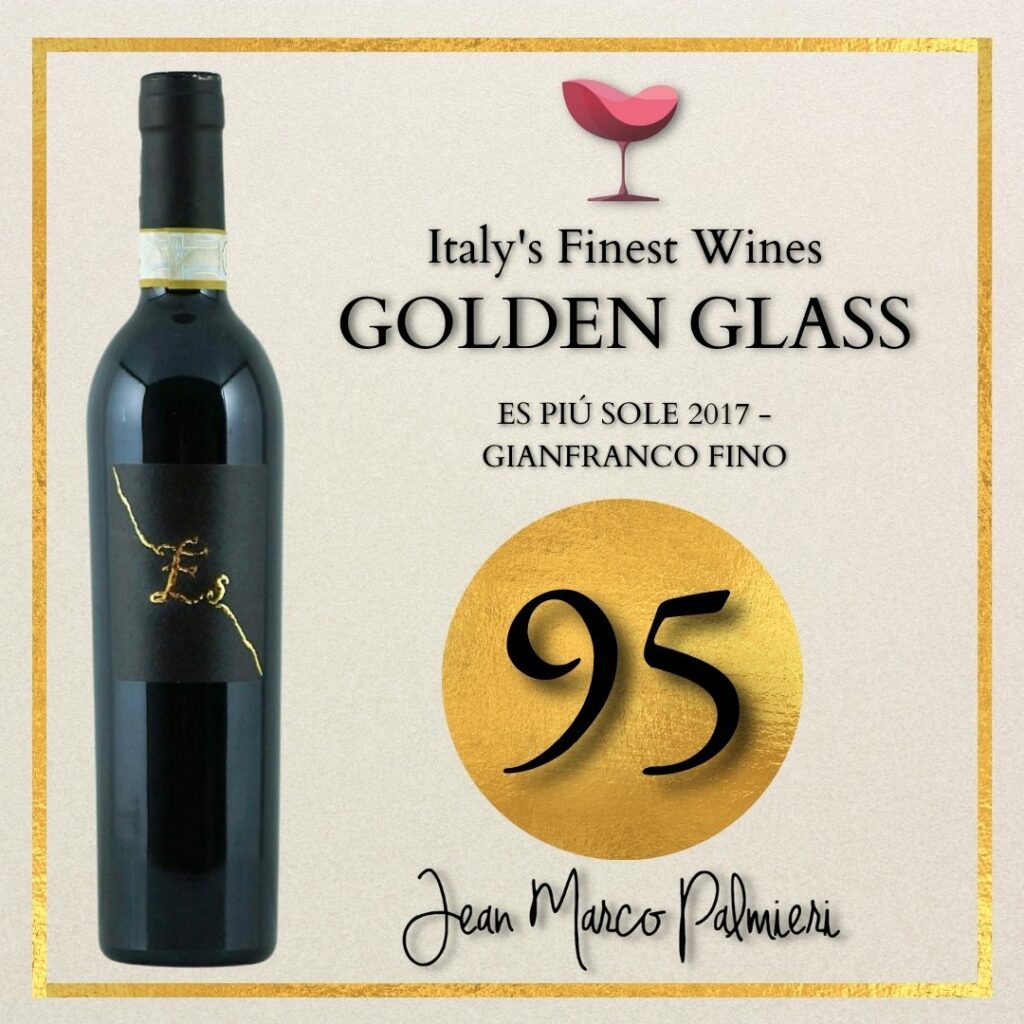
Characteristics: Intense notes of candied cherry and dried fruit are embellished with delicate nuances of Mediterranean herbs and a finish with echoes of roasting. The sip is sweet and bursting, with a very pleasant saline presence on the finish that invites you to drink it.
Natural drying of the grapes on the vine, fermentation in French oak barrels with two weeks maceration. The refinement proceeds for 9 months in French barriques and at least 9 in the bottle.
Exciting wine that maximizes the expressive potential of Primitivo: A riot of aromas that are the prelude to a sip of great volume and length. Fully among the best Italian sweet wines by territorial character.
Grapes: Primitivo 100%
Puglia region
Vin Santo di Carmignano Riserva 2014 – Capezzana
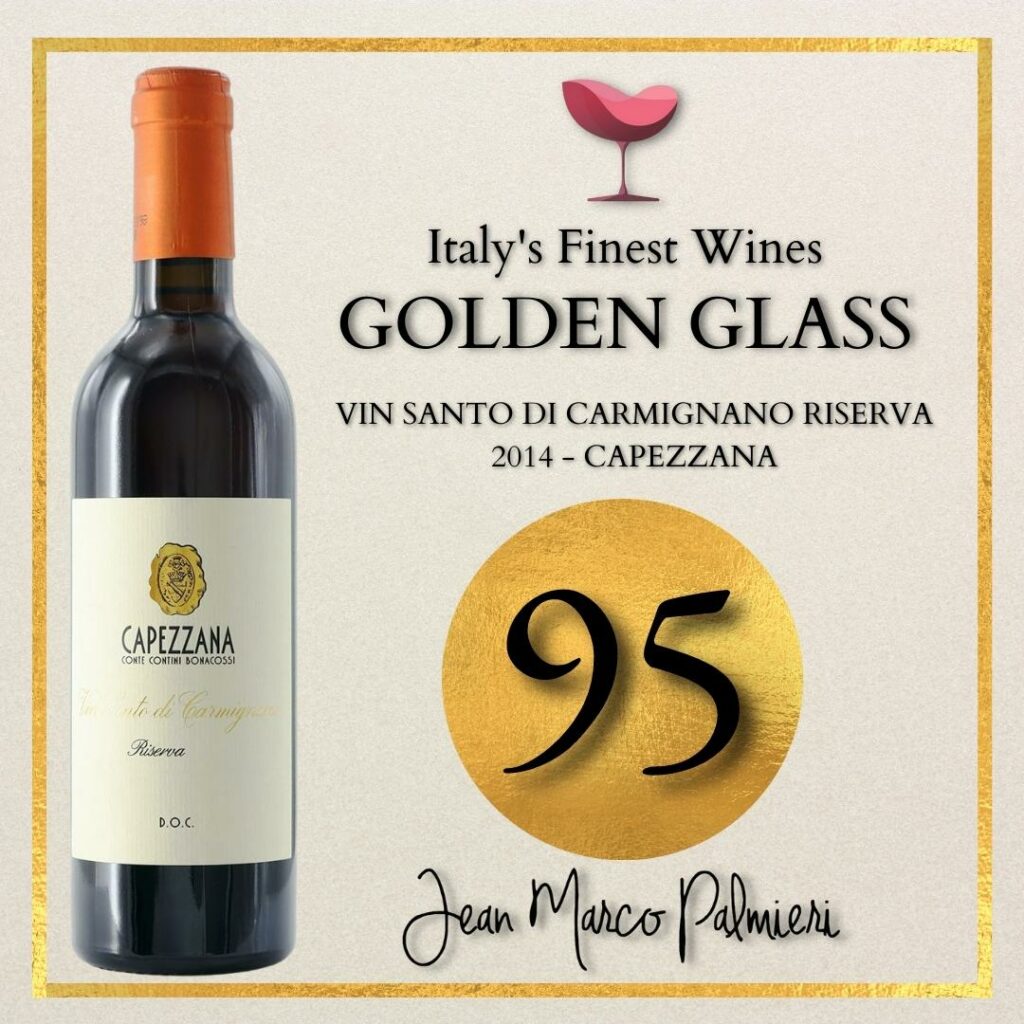
Characteristics: It opens with notes of dried figs and candied orange peel to continue towards shades of white flowers and cloves. The sip is soft and full-bodied, with a honeyed finish.
Vinified in small casks of chestnut, oak and cherry, it ages for five years.
A sweet wine characterized by a very pleasant softness and aromas that become even more elegant with aging in the bottle. Deservedly to be counted among the best sweet wines of Italy, produced in a limited number.
Grapes: Trebbiano 90%, San Colombano 10%
Tuscany region
Passito di Pantelleria ‘Ben Ryé’ 2020 – Donnafugata
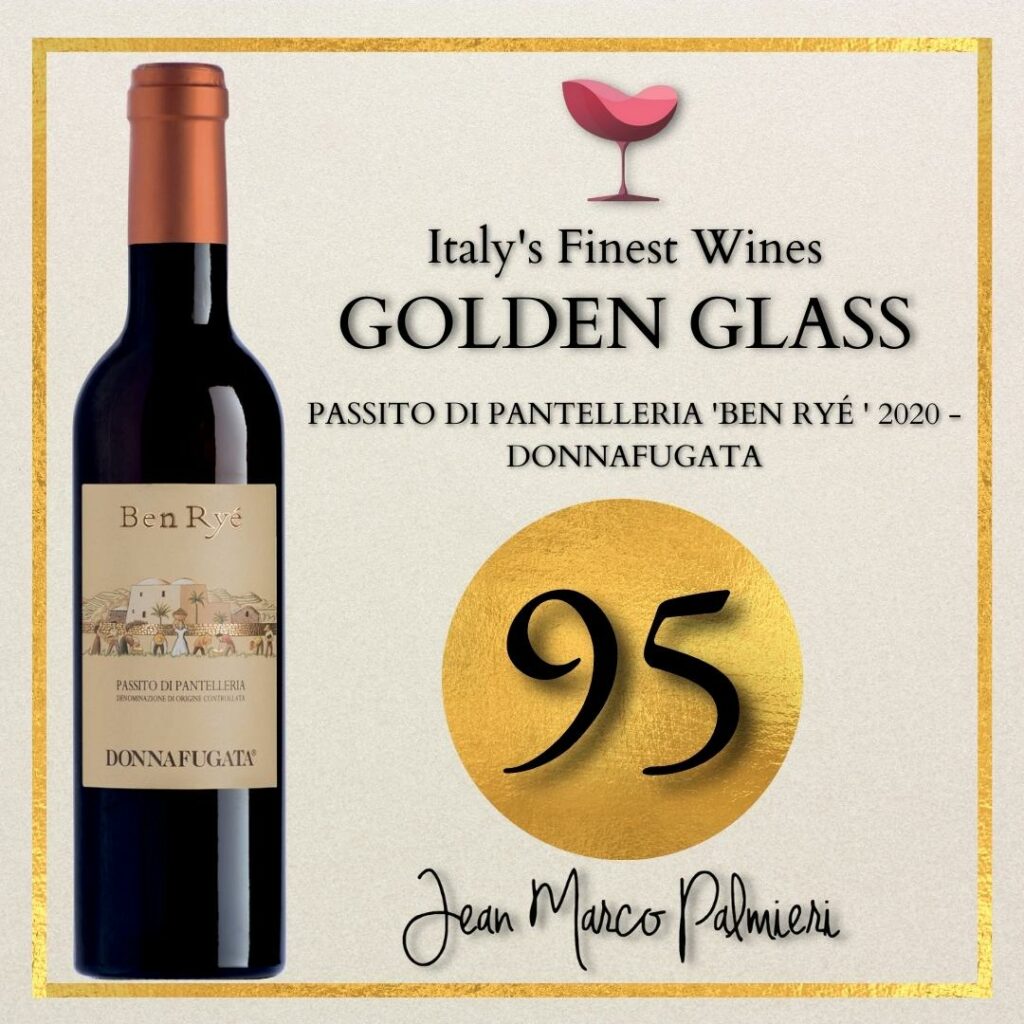
Characteristics: Juicy yellow-fleshed fruit, acacia honey and brushstrokes of dehydrated figs blend with whiffs of salt. The sip is soft and opulent, made vibrant by a clear acidity that lengthens the drink towards an aromatic and persistent finish.
Made with Zibibbo grapes from 11 different districts, with unique and complementary microclimates and characteristics.
The name ‘Ben Ryè’ means ‘daughter of the wind’. A passito that releases the essence of the Mediterranean: rich, aromatic and seductive, with an excellent structure. Deservedly among the best Italian dessert wines for character and aromatic range.
Grapes: Zibibbo 100%
Region: Sicily (Pantelleria)
Recioto di Soave Classico 2018 – ‘Le Sponde’
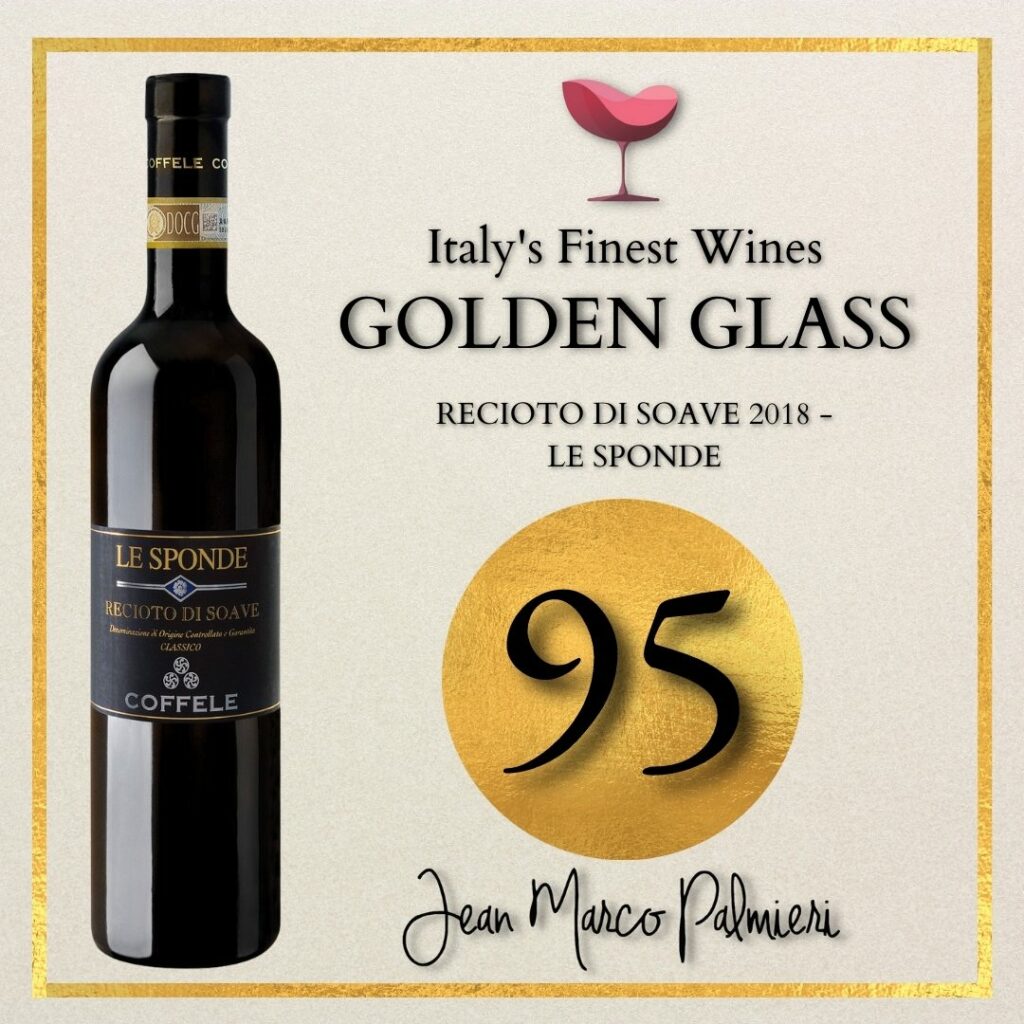
Characteristics: Passion fruit, acacia and chestnut honey are mixed with candied fruit, embellished with nuances of hydrocarbons. On the palate it is voluminous, sweet and enthralling with a great well-dashed iodine note that amplifies the sip. End of imperishable persistence in which all the aromatic nuances echo.
The natural drying of the grapes hung on the nets in the lofts and the aging in barriques for 12 months.
From one of the most iconic producers of Soave: A sui generis wine, whimsical and engaging. Among the best Italian sweet wines for maximizing the oenological potential of Garganega.
Grapes: Garganega 100%
Region: Veneto (Soave)
Recioto della Valpolicella Classico DOCG ‘Pergole Vece’ 2017 – Le Salette
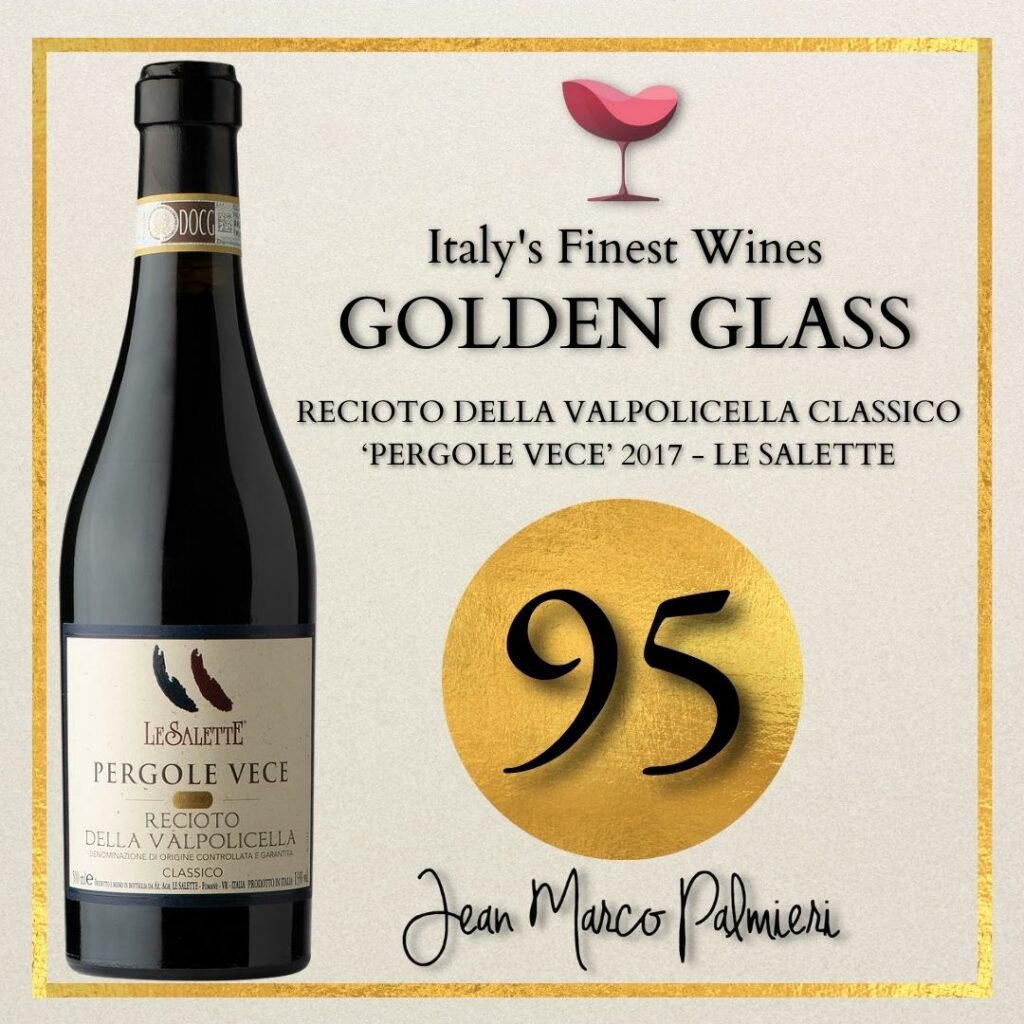
Characteristics: Red fruit jam and roasting notes are enhanced by hints of licorice root and dried fruit. The sip is dense and enveloping, balanced by an acid vein that culminates in a finish of good persistence.
Obtained from 6 months dried grapes, it ages for 20 months in terracotta amphorae.
Deservedly among the best sweet wines for balance and overall pleasantness. Closure characterized by an alternating sweet-savory note that recalls the sip.
Grapes: 80% Corvina and Corvinone; 20% Rondinella and Oseleta
Veneto region
Tal Luc – Lis Neris
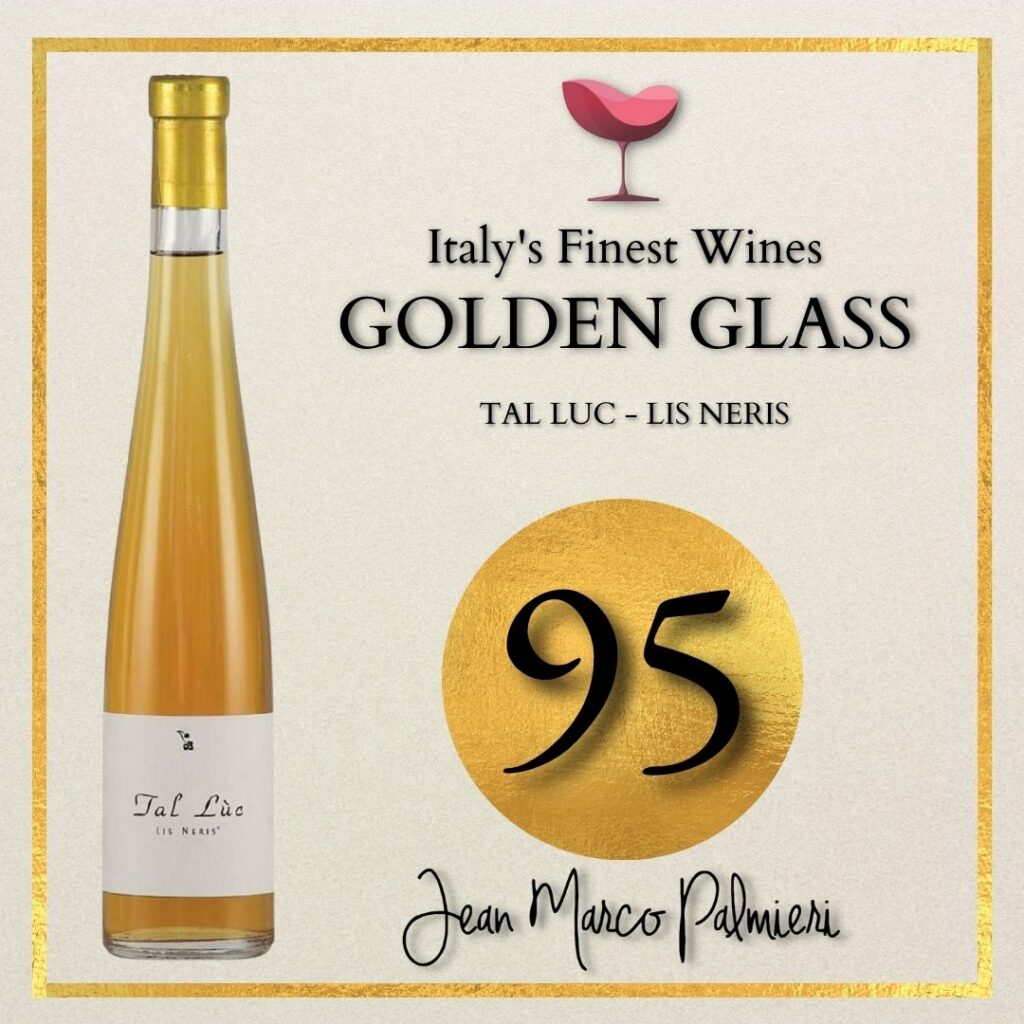
Characteristics: A riot of ripe and tropical yellow pulp fruits that fade towards citrus tones, resin and acacia honey and delicate balsamic sensations. The palate is sweet with a particularly pronounced acidity that gives great smoothness.
The grapes are dried on racks for 120/130 days in an air-conditioned environment without the formation of mold. Fermentation and maturation take place in ever new barriques. Not filtered.
A lysergic wine of great eloquence: it fascinates the nose with intense and multifaceted aromas and unravels on the palate material, dense and of imperishable persistence. To be counted among the best Italian sweet wines.
Grapes: White grapes
Region: Friuli Venezia Giulia (Isonzo)
‘Muffato della Sala’ 2019 – Castello della Sala Antinori
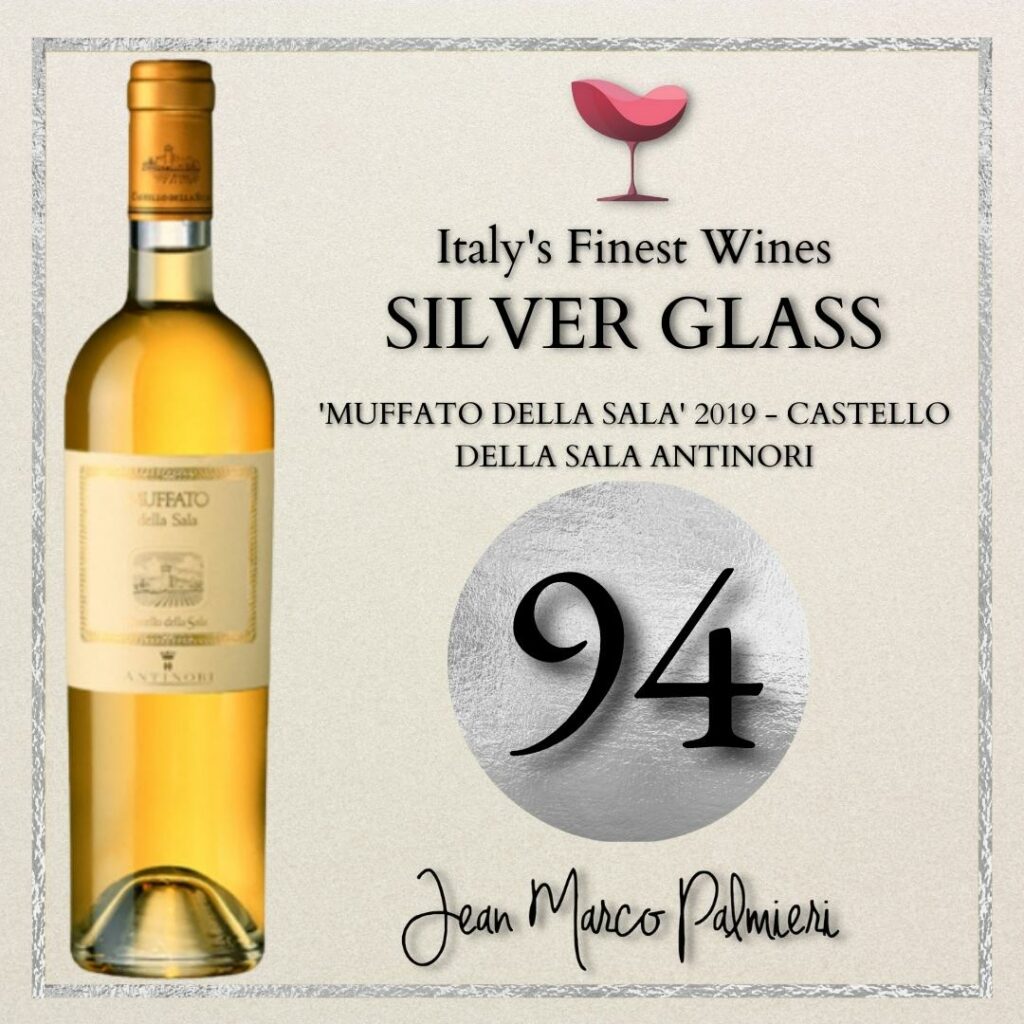
Characteristics: Bouquet characterized by aromas of yellow peach and candied fruit, embellished with notes of honey, saffron and dehydrated dates. On the palate it is sweet and enveloping, animated by a lively acidity that lengthens the drink.
Obtained from Sauvignon Blanc, Grechetto grapes and small amounts of Traminer and Riesling attacked by Botrytis Cinerea which gives the typical scents. Refines in French oak barriques for about 6 months.
The ‘Muffato della Sala’ is a wine with refined and unmistakable aromas. Icon of Umbria, it is to be counted among the best sweet wines of Italy for character and uniqueness.
Grapes: Sauvignon Blanc, Grechetto, Gewurztraminer and Riesling
Region: Umbria
Passito di Pantelleria ‘Bukkuram 2014 – Padre della Vigna’ Marco De Bartoli
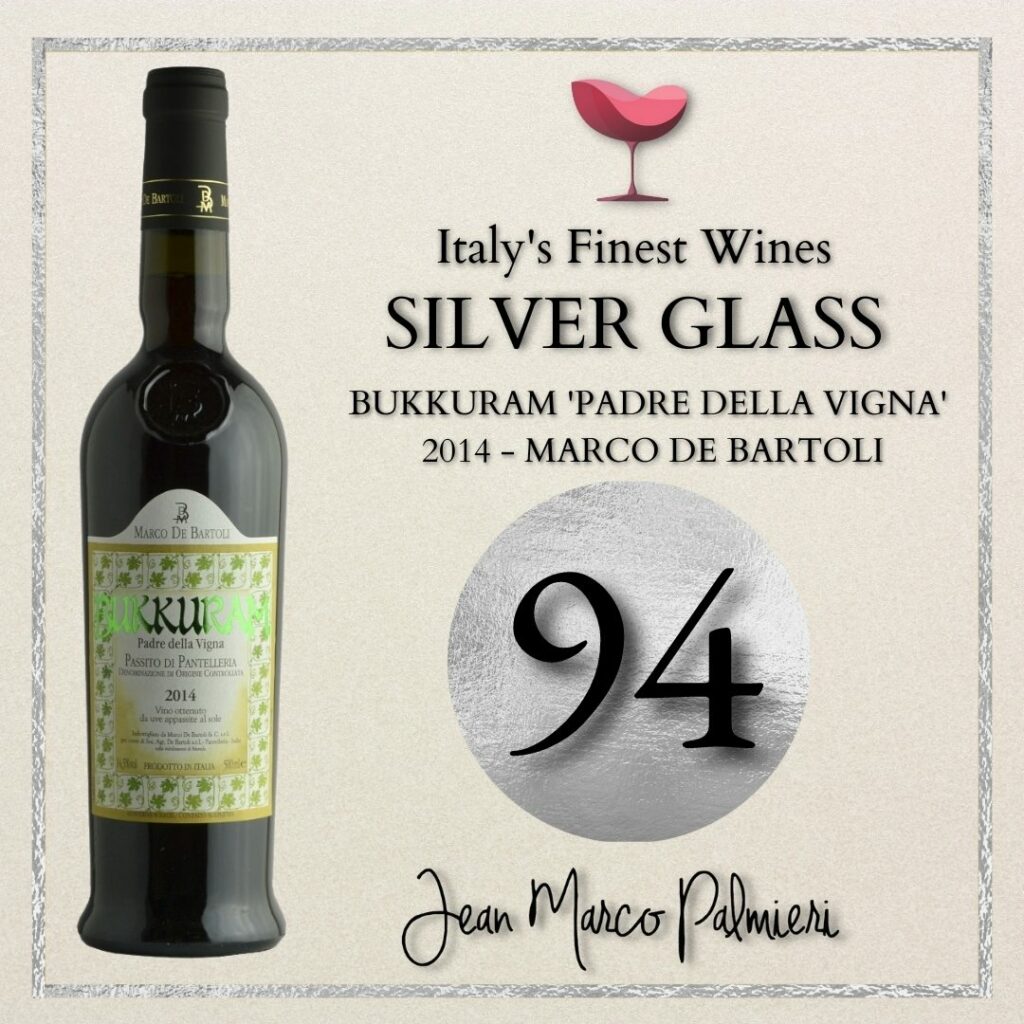
Characteristics: Aromatic layered profile: opens on notes of candied orange peel, to continue towards tones of honey, saffron and wild mint. On the palate it flows sweet, dense and voluminous. Well balanced finish, with great persistence and cleanliness.
The grapes wither naturally in the sun for 50%, the remainder on the plant. Spontaneous fermentation and maceration for about 3 months follows. Refine 30 months in non-first passage barriques and 6 months in steel.
From one of the most virtuous artisan wineries in Sicily, Marco de Bartoli’s Bukkuram is a wine of unusual finesse and balance obtained by Zibibbo. Fully qualified among the best white desserts in Italy for complexity and persistence.
Grapes: Zibibbo
Region: Sicily (Pantelleria)
Grechetto Passito ‘Muffo’ 2016 – Sergio Mottura
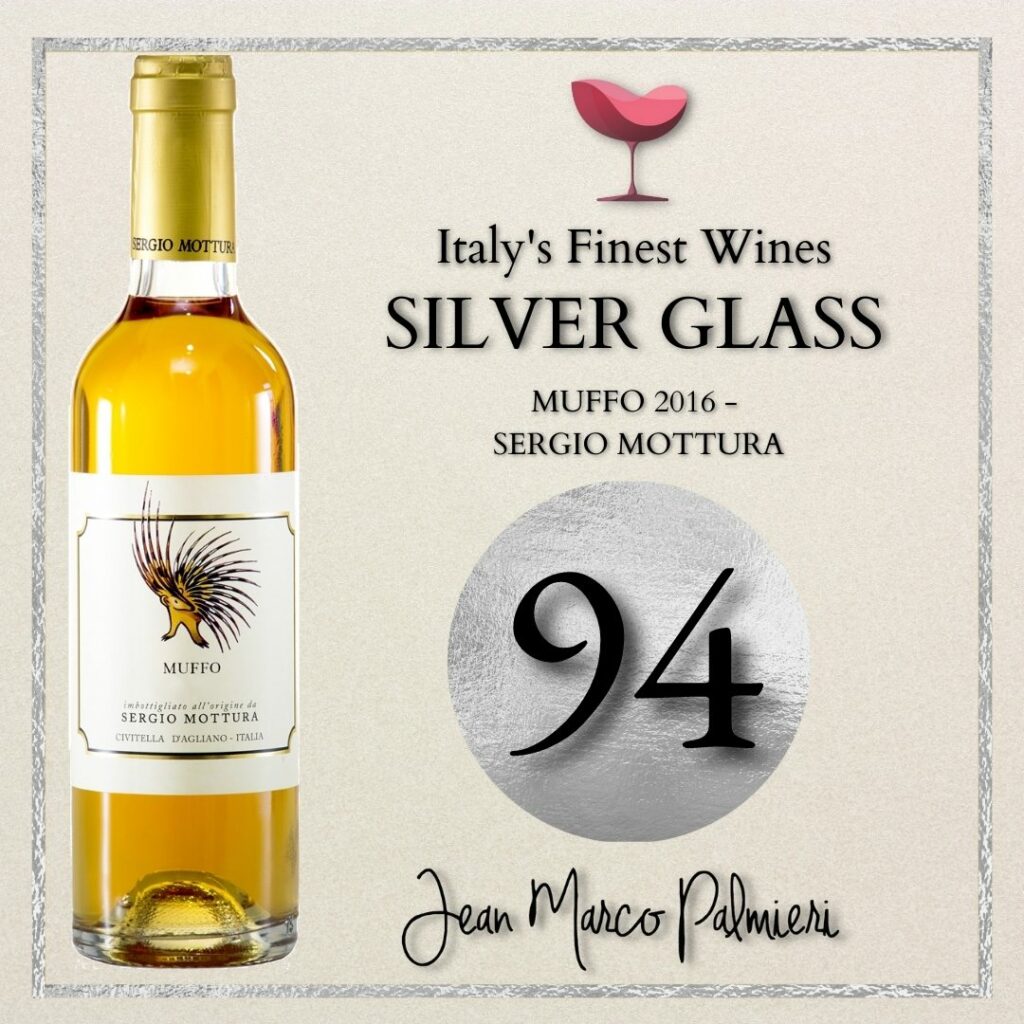
Characteristics: Fresh and fragrant olfactory range, with delicate nuances of bitter orange marmalade that blend with hints of Dijon mustard and salt. In the mouth it is extraordinarily voluminous with a persistent finish of good cleanliness that confirms the sense of smell.
Manual harvest of grapes affected by noble rot, vinification in steel at a controlled temperature and 12 months in oak barrels.
An elegant musty wine capable of maximizing the expressiveness and richness of Grechetto.
Fully among the best Italian sweet wines.
Grapes: Grechetto
Region: Lazio (Viterbese)
Orvieto Classico Superiore Muffa Nobile Calcaia 2016 – Barberani
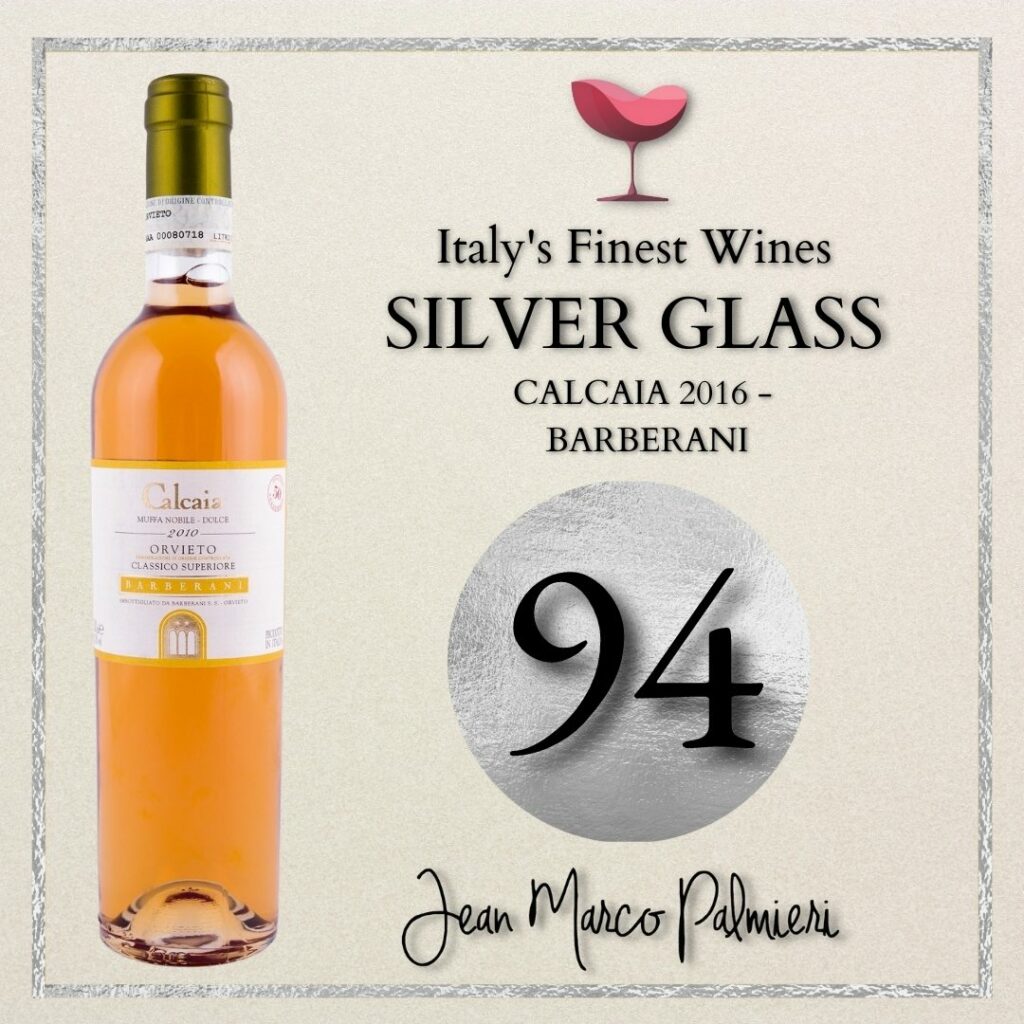
The aromatic framework is intense, multifaceted and fresh with succession of saffron that veers towards tones of dehydrated figs, almond notes and sweet spices. On the palate it is sweet and voluminous and supported by a great acid backbone. The alternating note between sweetness and iodized mineral nuances that embellish the presence on the palate is interesting.
The grapes are harvested when the bunches show the evident signs of the Noble Mold, the Botrytis Cinerea, which is formed thanks to the fog that envelops the vineyards of Orvieto Classico during the autumn mornings.
Virtuous testimony of the oenological potential of the Orvieto area. The aging potential is very interesting. Deservedly among the best Italian sweet wines.
Grapes: Grechetto, Trebbiano Procanino
Region: Umbria
Albana Passito ‘Scaccomatto’ 2018 – Fattoria Zerbina
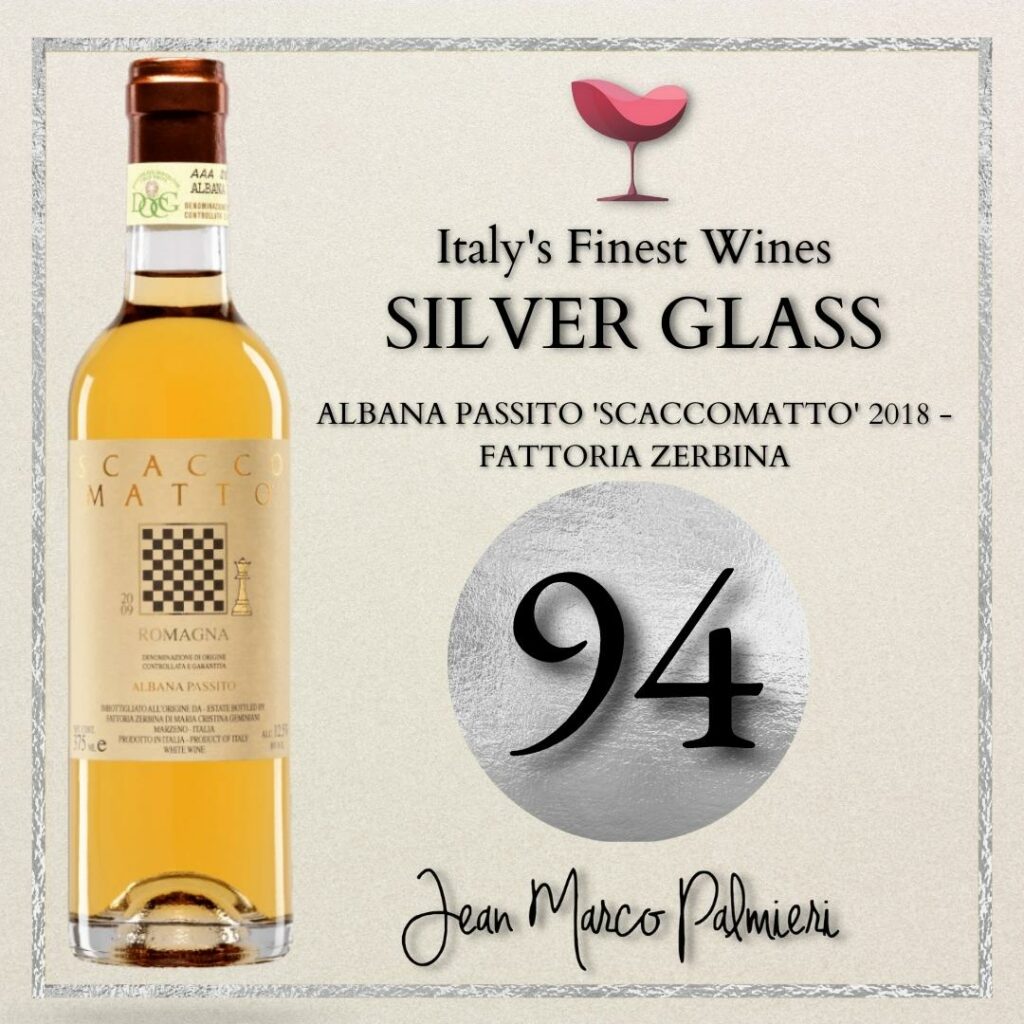
Characteristics: It opens on notes of peach, apricot and candied fruit to continue towards memories of small pastries and Mediterranean scrub. On the palate it is enveloping and harmonious, with a very pleasant structure. Sapid and persistent finish on fruit and spices.
Made with grapes affected by noble rot, harvested in a Sauternes style, it ages partly in steel and partly in French oak barriques.
Sweet wine par excellence from Romagna, Fattoria Zerbina’s ‘Scaccomatto’ is a synthesis of opulence and flavor. The sip, soft and very fresh, gives complexity and pleasure. Fully qualified among the best sweet wines of Italy.
Grapes: Albana
Region: Emilia-Romagna (Romagna)
Sciacchetrà Riserva 2013 – Forlini Cappellini
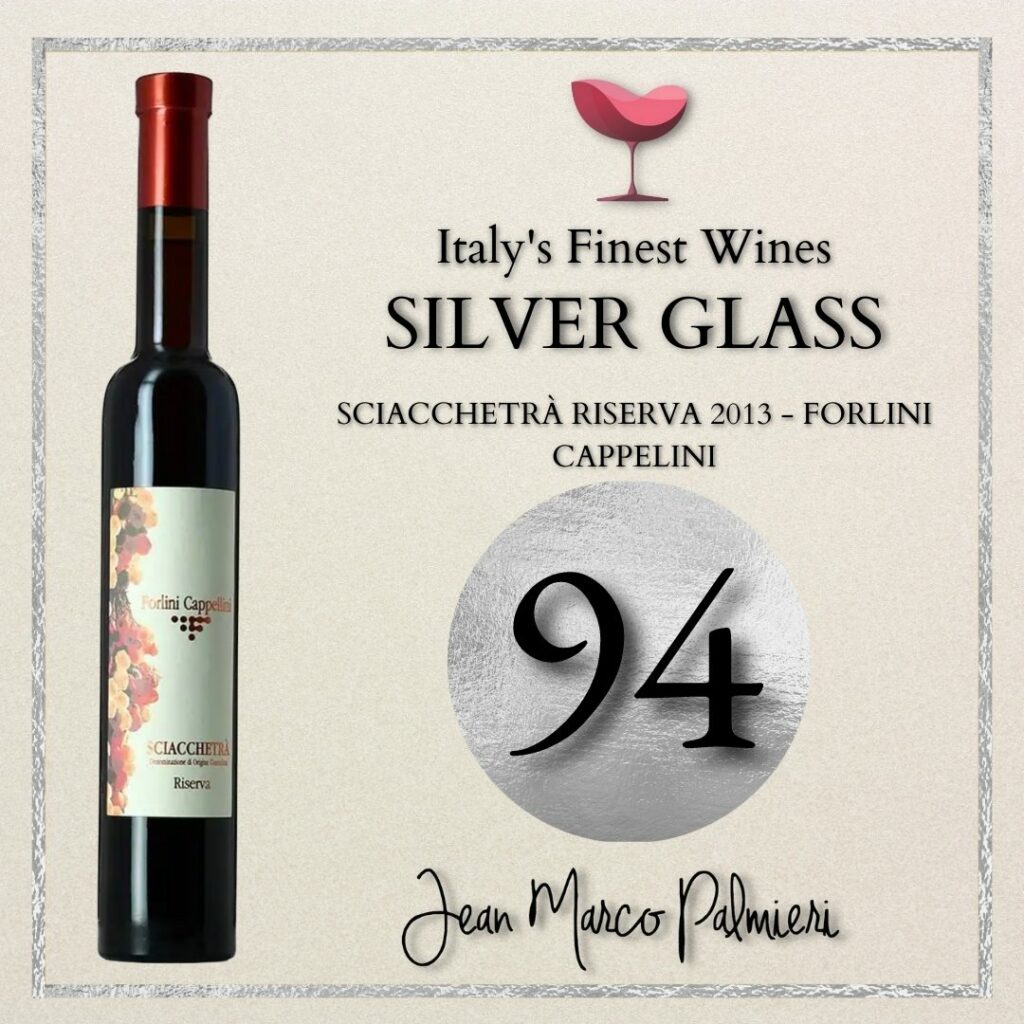
Characteristics: Strong notes of candied fruit, viennoiserie, officinal herbs and toasted hazelnuts emerge on the nose. The sip is rich, full and soft, supported by a nice acidity that culminates in a finish with continuous fruity and sweet echoes.
The grapes are naturally dried and the aging takes place for 36 months in small oak barrels.
From the Cinque Terre one of the most elegant and engaging sweet wines of Italy. Deservedly among the best Italian sweet wines for the expression of unusual finesse and taste-olfactory eloquence.
Grapes: Bosco, Vermentino, Albarola
Region: Liguria
Torcolato di Breganze 2019 – Maculan
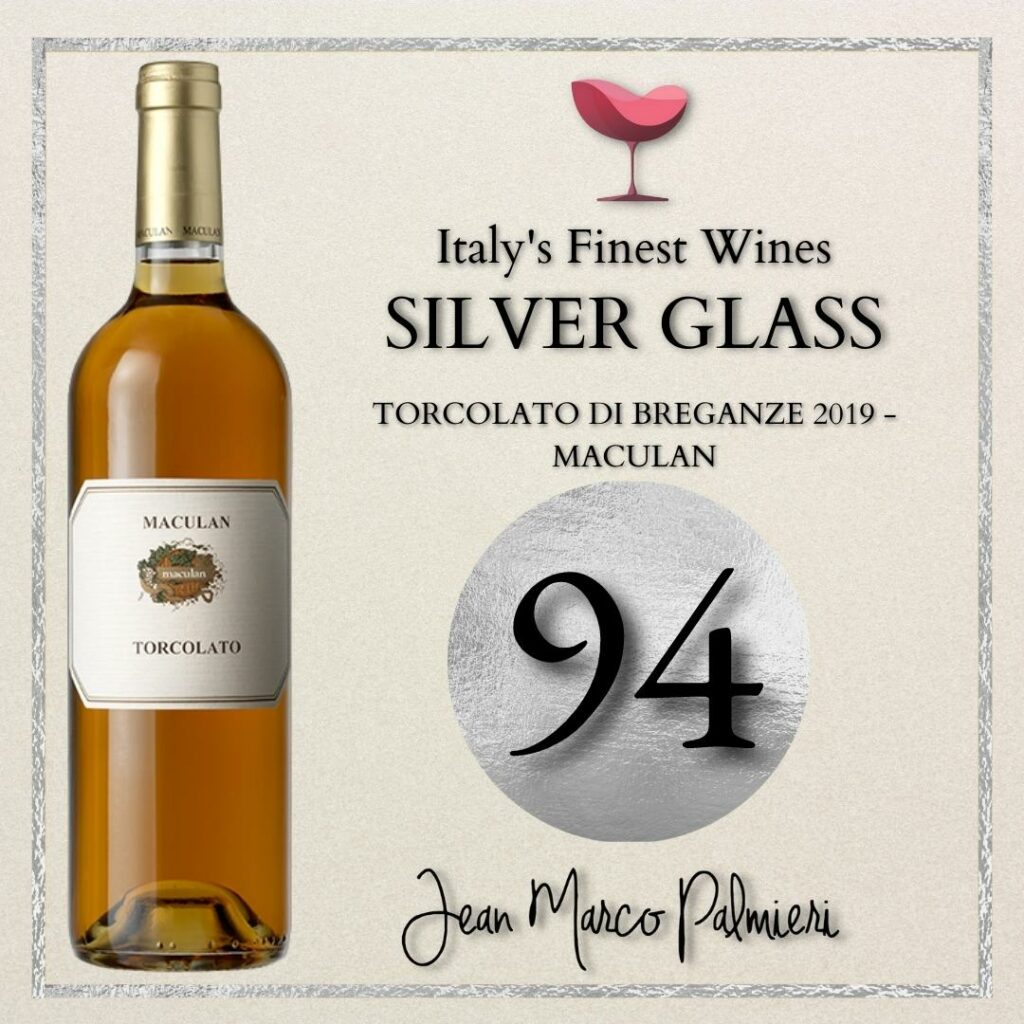
Characteristics: Brushstrokes of apricot, dehydrated figs and honey blend with nuances of candied orange. On the palate it is pleasantly complex, with a nice savory line that balances the residual sugar.
Drying for three months in the loft and aging in French oak barriques.
Refined and opulent, Maculan’s Torcolato di Breganze is a meditation wine that releases the essence of the territory. Excellent value for money for one of the best sweet wines in Italy.
Grapes: Vespaiola 100%
Veneto region
Passito ‘I Capitelli’ 2020 – Anselmi
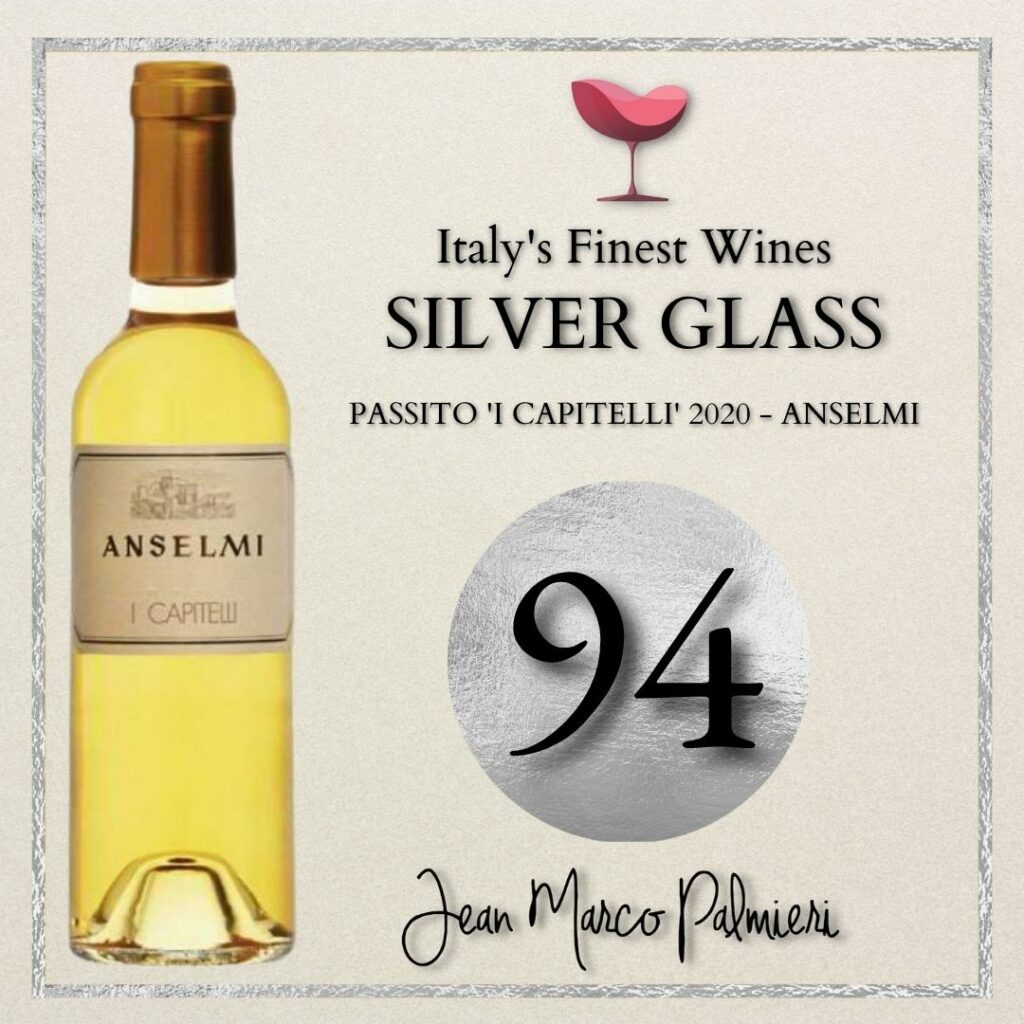
Characteristics: Hawthorn, yellow pulp fruit and papaya mix with hints of honey and oriental spices. The sip is seductive, soft, with an enveloping closure made intriguing by a beautiful acid vein.
Made with a Garganega, it ages in oak barrels for at least 8 months.
A soft and aromatic sweet wine, a riot of tropical fruit and spices. Deservedly among the best Italian sweet wines.
Grapes: Garganega 100%
Veneto region
Chambave Muscat Passito ‘Fletri’ 2017 – La Vrille
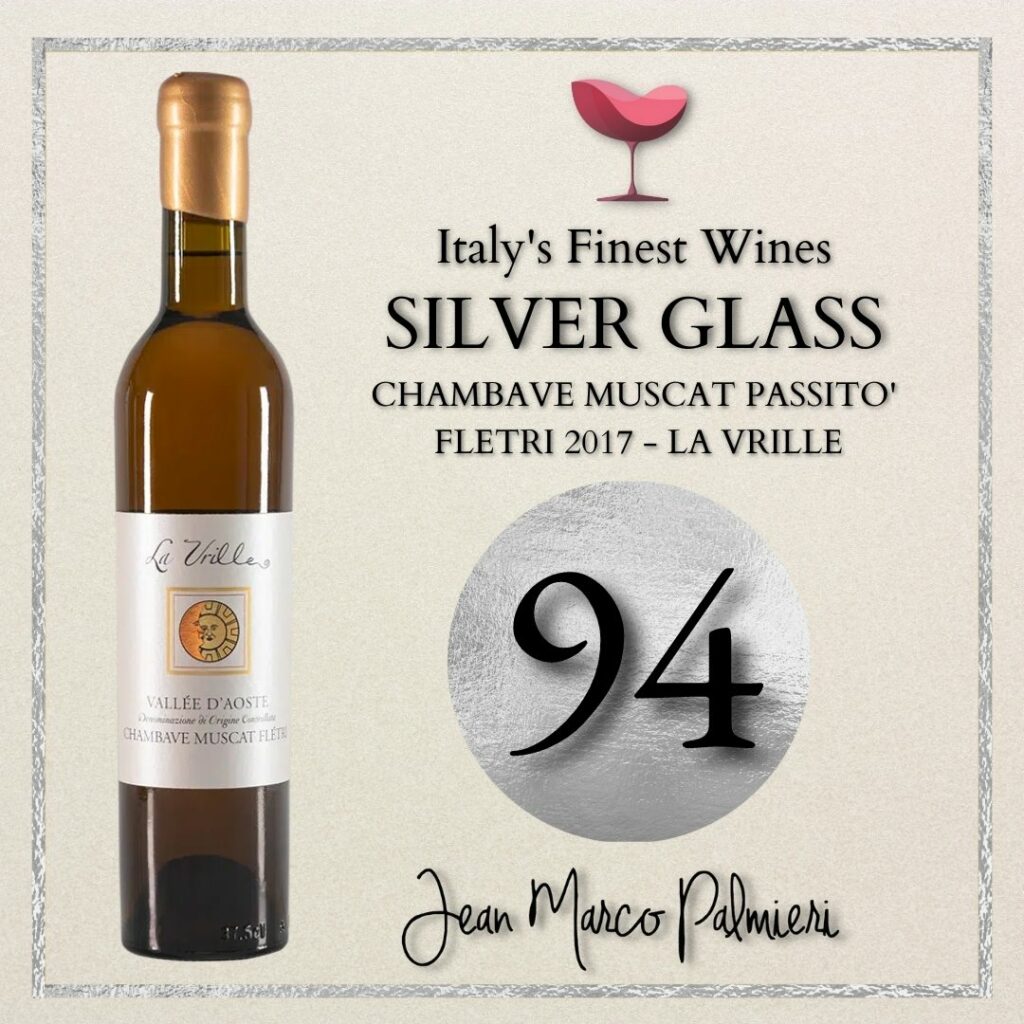
Characteristics: Papaya and yellow peach in syrup blend with aromatic herbs and flint. On the palate it flows soft and deep, with a sweet and fresh net. Long finish of great harmony.
Natural drying of the bunches in crates, then vinification and aging for 12 months in steel, followed by 4 months in the bottle.
From Valle d’Aosta a wine with a refined and seductive character, to be counted among the best Italian white wines for its ability to masterfully combine sweetness and freshness.
Grapes: 100% Moscato
Region: Aosta Valley
‘Passito di Noto’ 2018 – Planeta
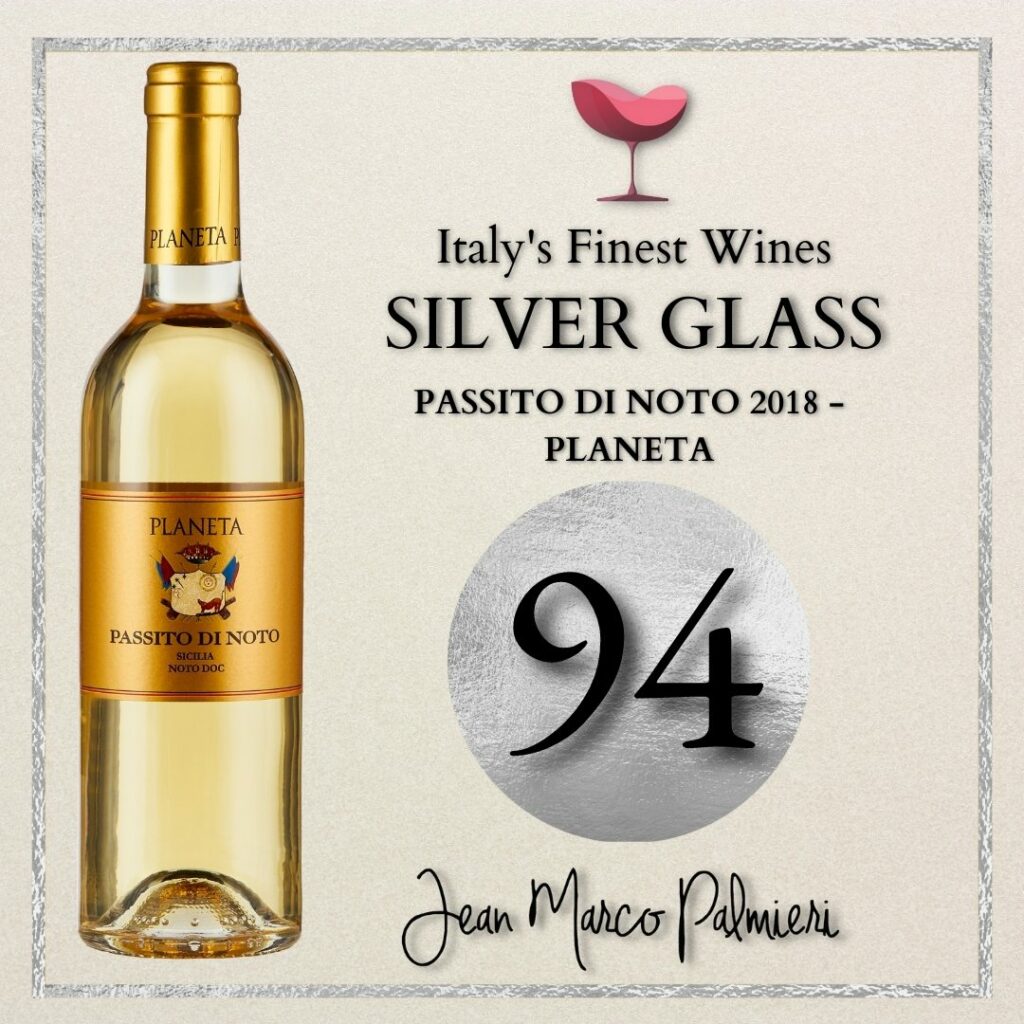
Characteristics: Smell initially played on floral notes of orange blossom, flanked by tropical fruit notes, embellished with more enigmatic hints of medicinal herbs and candied ginger. Palate characterized by enveloping sweetness and a final of imperishable persistence with echoes in which the fruit echoes the protagonist.
The grapes are harvested at the end of August and dried for about 40 days in a ventilated environment, followed by fermentation in steel tanks.
One of the best sweet wines for drinkability: the alternating note of iodized flavor and sweetness creates a very convincing dialectic.
Grapes: 100% Moscato
Region: Sicily (Noto)
WHAT TO MATCH WITH SWEET WINES?
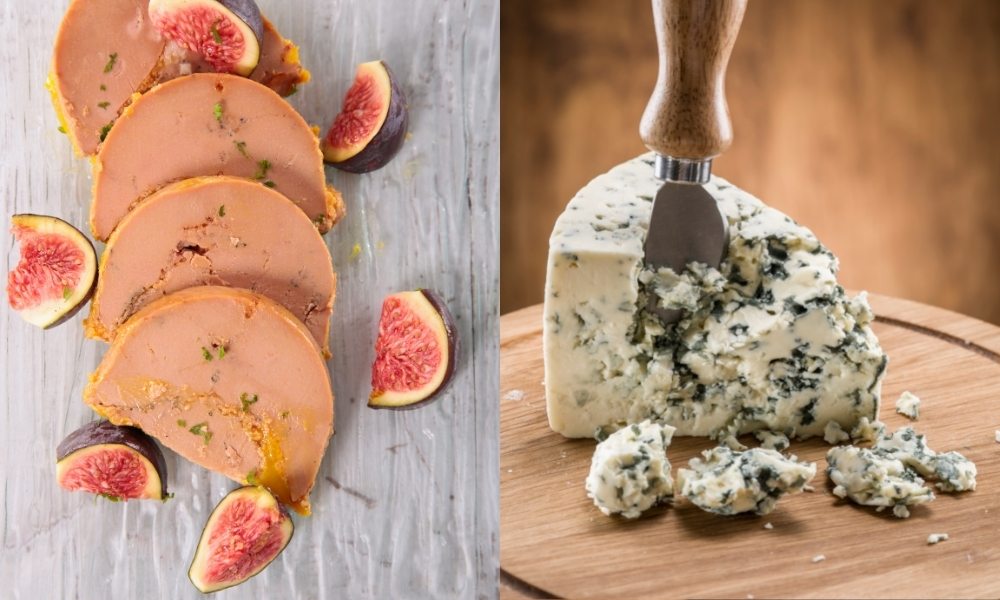
What are the best pairings with sweet wines (dessert wines)? Among the various possibilities, sweet wines are recommended by analogy with leavened desserts, pies, pastries, chocolate or by contrast fatty and savory ingredients such as blue cheeses, very aged cheeses and foie gras.
In general, it must be ensured that the alcohol content and the aromatic persistence of the sweet wine are in harmony with the structure of the dessert in combination. Furthermore, for a successful pairing, the sweetness of the dish to be paired must not be higher than that of the wine, while the sweetness of the wine can be equal to or (slightly) higher than that of the dessert.
For example, a low alcoholic sweet wine made from white berried grapes such as a Recioto di Soave, a Moscato or a Verduzzo will be recommended for delicate cakes or small pastries, while for more fatty dishes with cocoa you can opt for more complex sweet wines and from red grapes such as a Recioto della Valpolicella, a Primitivo di Manduria Dolce Naturale or a Vin Santo Occhio di Pernice.
What are the best sweet wines in Italy?

What is the best sweet wine in Italy? Choosing is a difficult undertaking, which however inevitably is subject to the limits of a subjective opinion, which as such, by definition, is deficient and arbitrary.
We have simply compiled a list of our favorite interpretations according to our evaluations. However, it remains essential to underline that wine is not born to be prestigious, exhibited or flaunted.
But to excite us and be shared in a genuine way with the people we love, binding ourselves to contingent situations and to the unrepeatable and intimate moments of our life.
Therefore, we invite you to visit wineries and get to know the producers who produce wines in their uniqueness, so that you can independently discover and choose the wine that can be counted for you among your personal favorite wines. If you have had the patience to read this far, thank you for your attention, but now is the time to fill the glasses and cut distant hopes, and therefore:
Cheers, Salute, Santé





